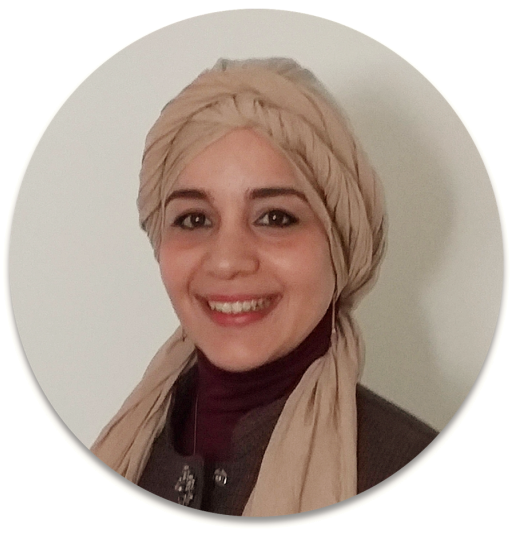Description & Relevance
Context
Big and complex data is fuelling diverse research directions in both medical image analysis and computer vision research fields. These can be divided into two main categories: (1) analytical methods, and (2) predictive methods. While analytical methods aim to efficiently analyse, represent and interpret data (static or longitudinal), predictive methods leverage the data currently available to predict observations at later time-points (i.e., forecasting the future) or predicting observations at earlier time-points (i.e., predicting the past for missing data completion). For instance, a method which only focuses on classifying patients with mild cognitive impairment (MCI) and patients with Alzheimer’s disease (AD) is an analytical method, while a method which predicts if a subject diagnosed with MCI will remain stable or convert to AD over time is a predictive method. Similar examples can be established for various neurodegenerative or neuropsychiatric disorders, degenerative arthritis or in cancer studies, in which the disease/disorder develops over time.
Why predictive intelligence?
It would constitute a stunning progress in the MICCAI research community if, in a few years, we contribute to engineering a ‘predictive intelligence’ which can map both low-dimensional and high-dimensional medical data onto the future with high precision. This workshop is the first endeavor to drive the field of ‘high-precision predictive medicine’, where late medical observations are predicted with high precision, while providing explanation via machine and deep learning, and statistically, mathematically- or physically-based models of healthy, disordered development and ageing. Despite the terrific progress that analytical methods have made in the last twenty years in medical image segmentation, registration or other related applications, efficient predictive intelligent models/methods are somewhat lagging behind. As such predictive intelligence develops and improves —and this is likely to do so exponentially in the coming years— this will have far-reaching consequences for the development of new treatment procedures and novel technologies. These predictive models will begin to shed light on one of the most complex healthcare and medical challenges we have ever encountered, and, in doing so, change our basic understanding of who we are.
What kind of research problems we aim to solve?
The main aim of PRIME-MICCAI is to propel the advent of predictive models in a broad sense, with application to medical data. Particularly, the workshop will admit 12-page papers describing new cutting-edge predictive models and methods that solve challenging problems in the medical field. We hope that PRIME workshop becomes a nest for high-precision predictive medicine, one that is set to transform multiple fields of healthcare technologies in unprecedented ways.
Topics of interests include but are not limited to predictive methods dedicated to the following topics:
- Modeling and predicting disease development or evolution from a limited number of observations;
- Computer-aided prognostic methods (e.g., for brain diseases, prostate cancer, cervical cancer, dementia, acute disease, neurodevelopmental disorders);
- Forecasting disease/cancer progression over time;
- Predicting low-dimensional data (e.g., behavioral scores, clinical outcome, age, gender);
- Predicting the evolution or development of high-dimensional data (e.g., shapes, graphs, images, patches, abstract features, learned features);
- Predicting high-resolution data from low-resolution data;
- Prediction methods using 2D, 2D+t, 3D, 3D+t, ND and ND+t data;
- Predicting image modality from a different modality (e.g., data synthesis);
- Predicting lesion evolution;
- Predicting missing data (e.g., data imputation or data completion problems).
- Predicting clinical outcome from medical data (genomic, imaging data, etc).
In-brief
This workshop will mediate ideas from both machine learning and mathematical/statistical/physical modeling research directions in the hope to provide a deeper understanding of the foundations of predictive intelligence developed for medicine, as well as to where we currently stand and what we aspire to achieve through this field. PRIME-MICCAI 2022 will feature a single-track workshop with keynote speakers with deep expertise in high-precision predictive medicine using machine learning and other modeling approaches —which are believed to stand at opposing directions. Our workshop will also include technical paper presentations, poster sessions, and demonstrations. Eventually, this will help steer a wide spectrum of MICCAI publications from being ‘only analytical’ to being ‘jointly analytical and predictive’.
Organizers
Keynote Speakers
Short bio: Professor Frangi is Diamond Jubilee Chair in Computational Medicine and Royal Academy of Engineering Chair in Emerging Technologies at the University of Leeds, Leeds, UK, with joint appointments at the School of Computing and the School of Medicine. He directs the CISTIB Center for Computational Imaging and Simulation Technologies in Biomedicine. He is Turing Fellow of the Alan Turing Institute. Prof Frangi is the Scientific Director of the Leeds Centre for HealthTech Innovation and Director of Research and Innovation of the Leeds Institute for Data Analytics. Professor Frangi is Chair of the Editorial Board of the MICCAI-Elsevier Book Series (2017-2020) and is Associate Editor of IEEE Trans on Medical Imaging, Medical Image Analysis, SIAM Journal Imaging Sciences, Computer Vision and Image Understanding journals. Professor Frangi was a foreign member of the Review College of the Engineering and Physical Sciences Research Council (EPSRC, 2006-10) in the UK. Professor Frangi's main research interests lie at the crossroads of medical image analysis and modeling with emphasis on machine learning (phenomenological models) and computational physiology (mechanistic models). His highly interdisciplinary work has been translated to cardiovascular, musculoskeletal and neurosciences.
Short bio: Prof Gee is the of Director, Penn Image Computing and Science Laboratory, Department of Radiology, Perelman School of Medicine, University of Pennsylvania, Philadelphia, PA. He is the Co-Director of the Translational Biomedical Imaging Center at the Institute of Translational Medicine and Therapeutics at the University of Pennsylvania. He is also the Director of the Interfaces Program in Biomedical Imaging and Informational Sciences at UPenn.
Program Committee Members
Ahmed Nebli, Forschungszentrum Jülich, Germany
Alaa Bessadok, University of Sousse, Tunisia
Chinasa Okolo, Cornell University, USA
Dong Hye Ye, Marquette University, USA
Febrian Rachmadi, RIKEN, Japan
Gang Li, University of North Carolina,USA
Ilwoo Lyu, Vanderbilt University, USA
Jaeil Kim, Kyungpook National University (KNU), Korea
Jiahong Ouyang, Stanford University, USA
Li Wang, University of North Carolina at Chapel Hill, USA
Lichi Zhang, Shanghai Jiao Tong University, China
Manhua Liu, Shanghai Jiao Tong University, China
Maria A. Zuluaga, EURECOM, France
Melissa Woghiren, University of Alberta, Canada
Pew-Thian Yap, University of North Carolina (UNC), USA
Qian Wang, Shanghai Jiao Tong University, China
Qingyu Zhao, Stanford University, USA
Reza Azad, RWTH University, Germany
Seong Tae Kim, Kyung Hee University, South Korea
Seung Yeon Shin, National Institutes of Health, USA
Ulas Bagci, University of Central Florida (UCF), USA
Won Hwa Kim, POSTECH, Korea
Ziga Spiclin, University of Ljubljana, Slovenia
Submission
The number of pages can range between 8 and 12 pages including references. Papers should be formatted in Springer LNCS style. PRIME reviewing is double-blind.
The accepted papers will be published in the PRIME LNCS Springer Proceedings.
For paper submission, please use the following link: https://cmt3.research.microsoft.com/PRIME2022
To download PRIME 2022 flyer, click here.
Key dates:
Full Paper Deadline: June 20, 2022; 11:59 PM EST; extended to July 10, 2022 at 11:59 PM EST
Notification of Acceptance: July 20, 2022
Camera-ready Version: July 28, 2022, 11:59 PM PST
Workshop date: September 22, 2022 (8am — 3pm Singapore time)
Submission instructions:
Papers should be submitted electronically following the guidelines for authors and LaTeX and MS Word templates available at Lecture Notes in Computer Science, double blind review). Manuscripts should be up to 12 pages and submitted via the PRIME submission website. No modifications to the templates are permitted. Failure to abide by the formatting guidelines will result in immediate rejection of the paper. The papers will be evaluated by three external reviewers or potential inclusion in the scientific program of PRIME-MICCAI.
We have also included a checklist for paper reproducibility.
SPECIAL PRIME 2022: Talented minority scholarship to register accepted PRIME papers by students in low-middle income countries (LMIC).
-We offer scholarships supported by BASIRA Lab to register accepted PRIME papers if the first author is a student at a University in a low-middle income country. If the rank of your country is larger or equal to 50 based on expenditure on R&D sorted in decreasing order, then you are eligible:
https://en.wikipedia.org/wiki/List_of_countries_by_research_and_development_spending
Instructions for submitting your camera-ready paper:
Please make sure to upload a zip file including the following documents:
1. The final camera-ready PDF of your paper.
2. All original files are required to generate the final PDF. If you are using Latex, please make sure to include .tex, .bib, figures, and any other files for compiling the tex file. If you are using Word, please upload the docx file. Name the main file using your submission ID number (example: 32.tex or 32.docx).
3. Please download and fill out the Springer copyright form which can be found using this link: https://bit.ly/3vtj0wD
Please make sure that the copyright forms have been filled out correctly before uploading the zip file.
The paper length can vary between 8 and 12 pages.
Finally, please upload only one zip (not rar) file with everything included (using your paper submission ID, for example: PRIME22-32.zip, where 32 is your paper ID number).
Program & Proceedings
To access the tentative program for PRIME-MICCAI 2022, please click on: PRIME MICCAI 2022 Program
We have two Zoom Backgrounds for PRIME, please choose one of them:
You can download the PRIME 2022 Springer LNCS Proceedings at https://link.springer.com/





